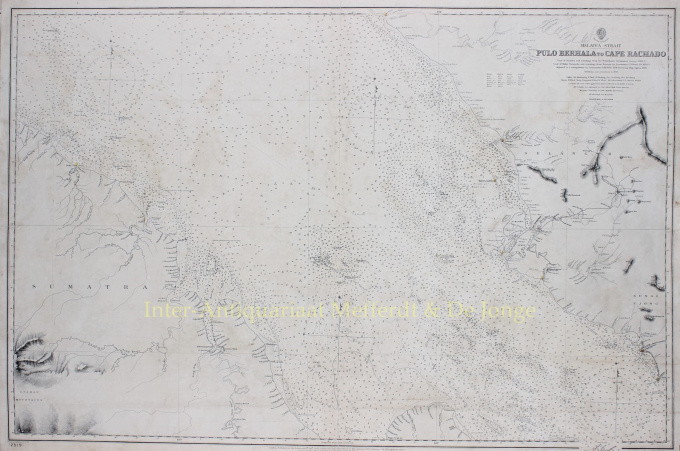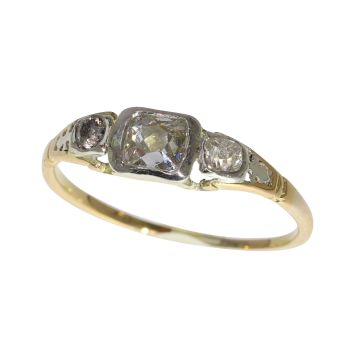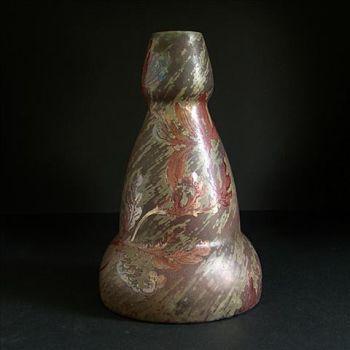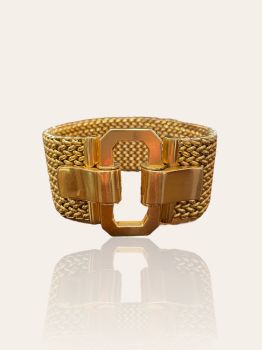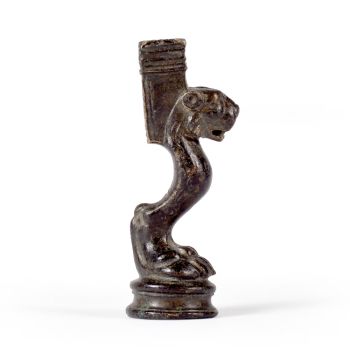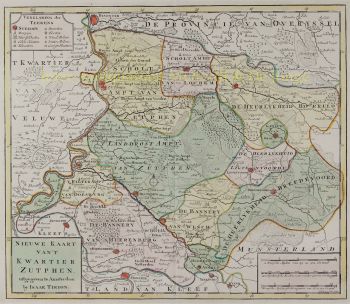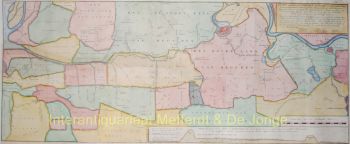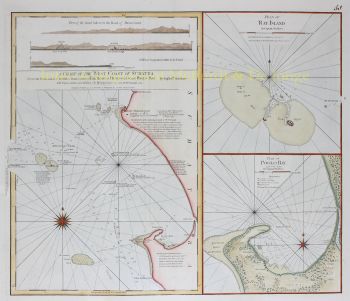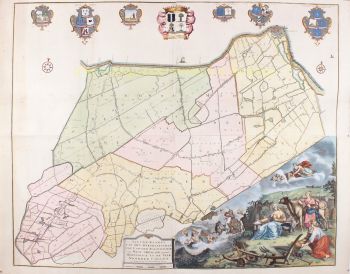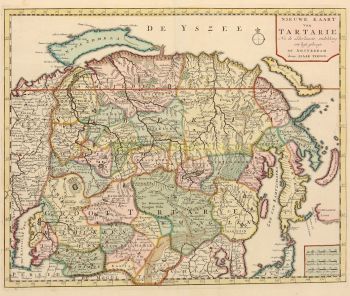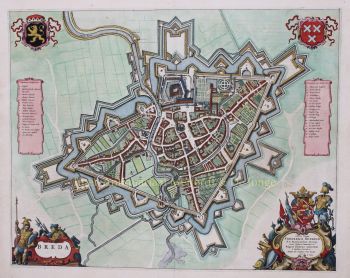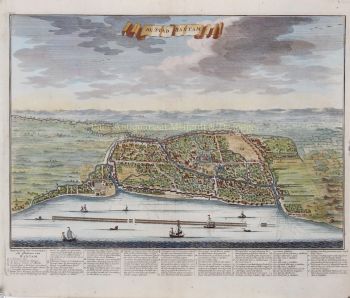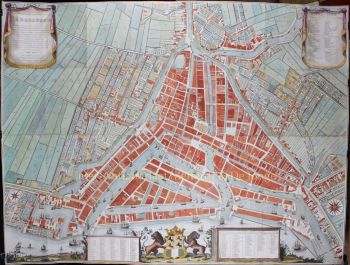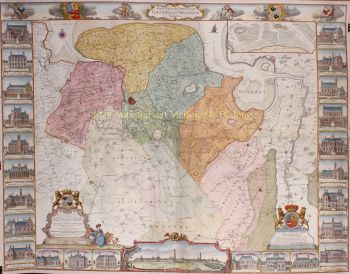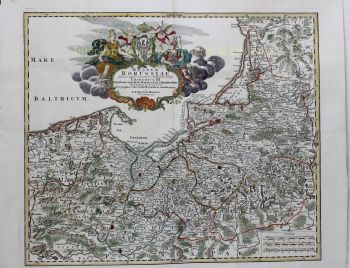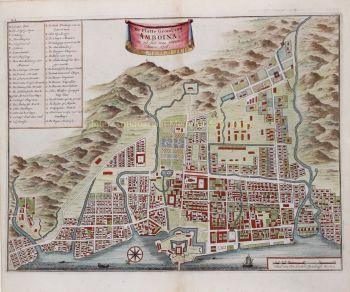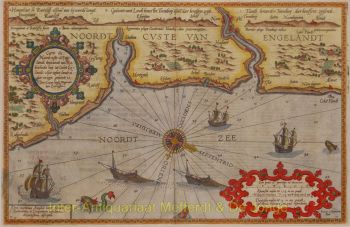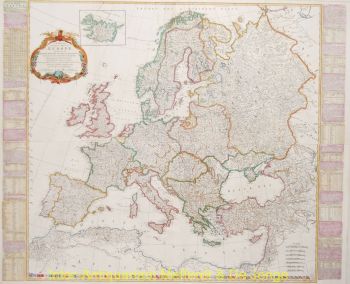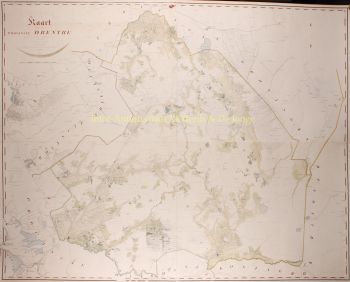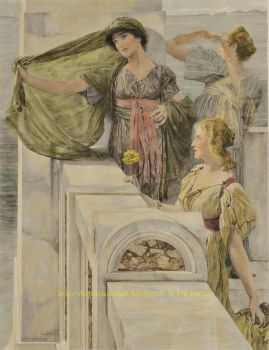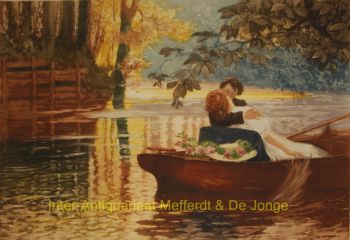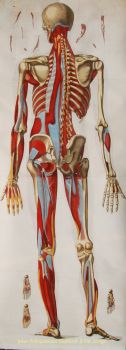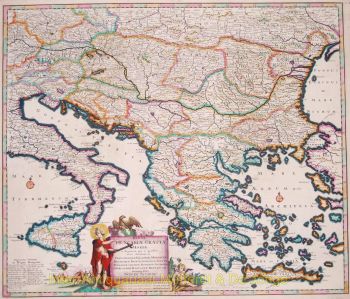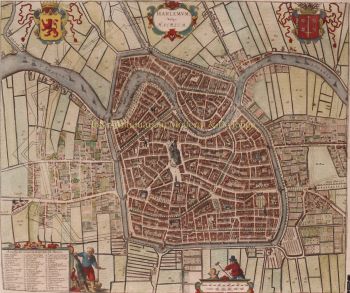Estrecho de Malaca, Kuala Lumpur 1895
Artista Desconocido
€ 1.350
Inter-Antiquariaat Mefferdt & De Jonge
- Sobre la obra de arteRARE 19TH CENTURY MAP OF THE MALACCA STRAIT WITH KUALA LUMPUR “Malacca Strait Pulo Berhala to Cape Rachada”, engraving by Davies & Company published in London by the British Admiralty in 8 October 1895 under the superintendence of Rear Admiral Sir W.J.L. Wharton. Size: 66 x 98 cm. In 1795 King George III created the United Kingdom Hydrographic Office to provide top notch nautical charts to the vast Royal Navy. Prior to the founding of the Admiralty the surveying and creation of nautical charts was primarily a commercial venture in which the cartographer himself, more often than not, actually financed the printing of his own material. The great navigator James Cook himself is known to have scrambled for funds to publish his own seminal charts - the most important and advanced of the period. The system of privately funded nautical mapping and publishing left vast portions of the world uncharted and many excellent charts unpublished. King George III, responding to significant loss in trade revenue related to shipwrecks and delay due to poor charts, recognised the need for an institutionalised government sponsored cartographic agency - the Admiralty. The United Kingdom Hydrographic Office is still in operation today. On this rare and large 19th century nautical chart or maritime map we see the Malay Peninsula with Kuala Lumpur, its neighbouring islands and parts of Sumatra surrounded by the South China Sea and Malacca Strait. Early Kuala Lumpur was a small town that suffered from many social and political problems – the buildings were made of wood and atap (palm frond thatching) that were prone to fire, lack of proper sanitation plagued the town with diseases, and it suffered from a constant threat of flooding. The early Chinese and Malay settlements were along the east bank of the Klang River – the Chinese mainly settled around the commercial centre of Market Square; the Malays, later Indian Chettiars and Indian Muslims resided in the Java Street (now Jalan Tun Perak) area. In 1880, the state capital of Selangor was moved from Klang to the more strategically advantageous Kuala Lumpur by the colonial administration, and the British Resident William Bloomfield Douglas then decided that the government buildings and living quarters should be located to the west of the river. The construction of the railway spurred the growth of the city. The population grew from 4,500 in 1884 to 20,000 in 1890. In 1896, Kuala Lumpur was chosen as the capital of the newly formed Federated Malay States. Price: EUR 1.350,-
- Sobre el artista
Puede suceder que un artista o creador sea desconocido.
Algunas obras no deben determinarse por quién está hecho o por (un grupo de) artesanos. Algunos ejemplos son estatuas de la Antigüedad, muebles, espejos o firmas que no son claras o legibles, pero también algunas obras no están firmadas en absoluto.
También puedes encontrar la siguiente descripción:
•"Atribuido a …." En su opinión, probablemente una obra del artista, al menos en parte.
•“Estudio de….” o “Taller de” En su opinión, una obra ejecutada en el estudio o taller del artista, posiblemente bajo su supervisión
•“Círculo de…” En su opinión, una obra del período del artista que muestra su influencia, estrechamente asociado con el artista pero no necesariamente su alumno.
•"Estilo de …." o “Seguidor de…”. En su opinión, una obra ejecutada al estilo del artista pero no necesariamente por un alumno; puede ser contemporáneo o casi contemporáneo
•"Manera de …." En su opinión una obra al estilo del artista pero de fecha posterior
•"Después …." En su opinión, una copia (de cualquier fecha) de una obra del artista
•“Firmado…”, “Fechado…” o “Inscrito” En su opinión, la obra ha sido firmada/fechada/inscrita por el artista. La adición de un signo de interrogación indica un elemento de duda.
•“Con firma…”, “Con fecha…”, “Con inscripción…” o “Lleva firma/fecha/inscripción” en su opinión la firma/fecha/inscripción ha sido añadida por alguien que no es el artista
¿Está interesado en comprar esta obra de arte?
Artwork details
Related artworks
- 1 - 4 / 12
- 1 - 4 / 24
- 1 - 4 / 12

